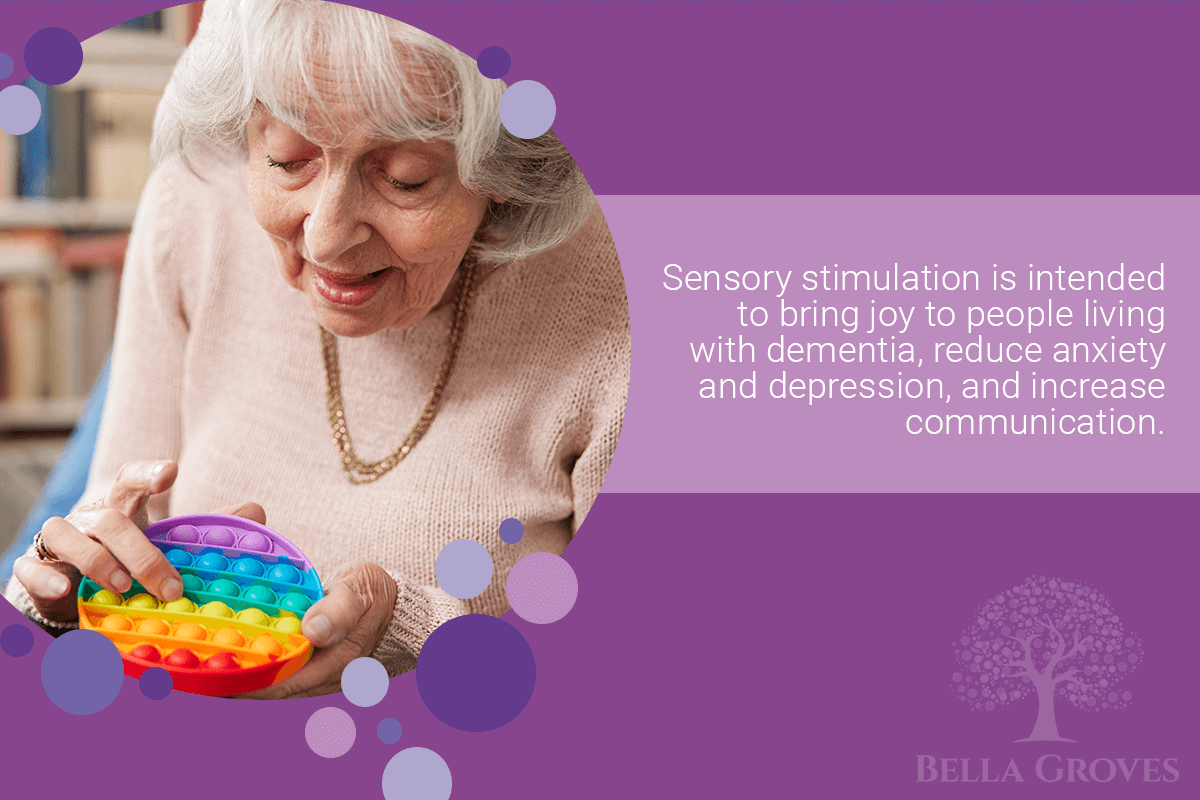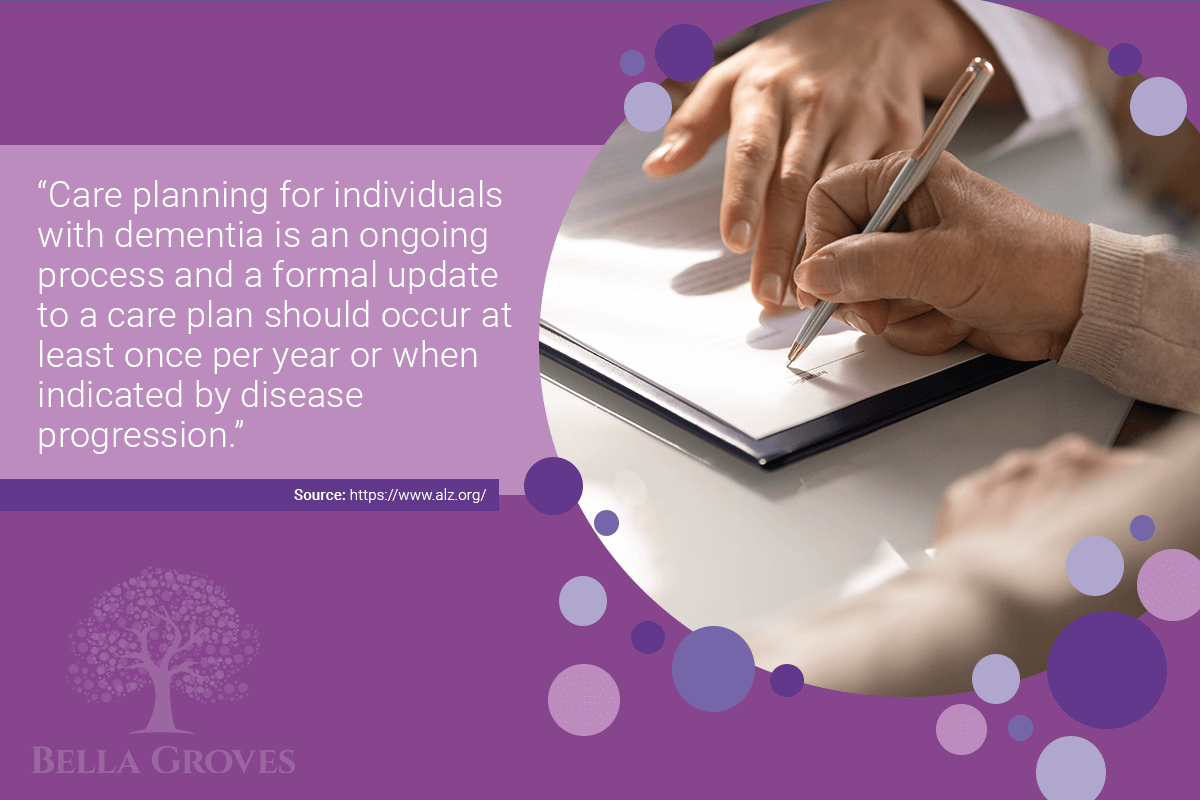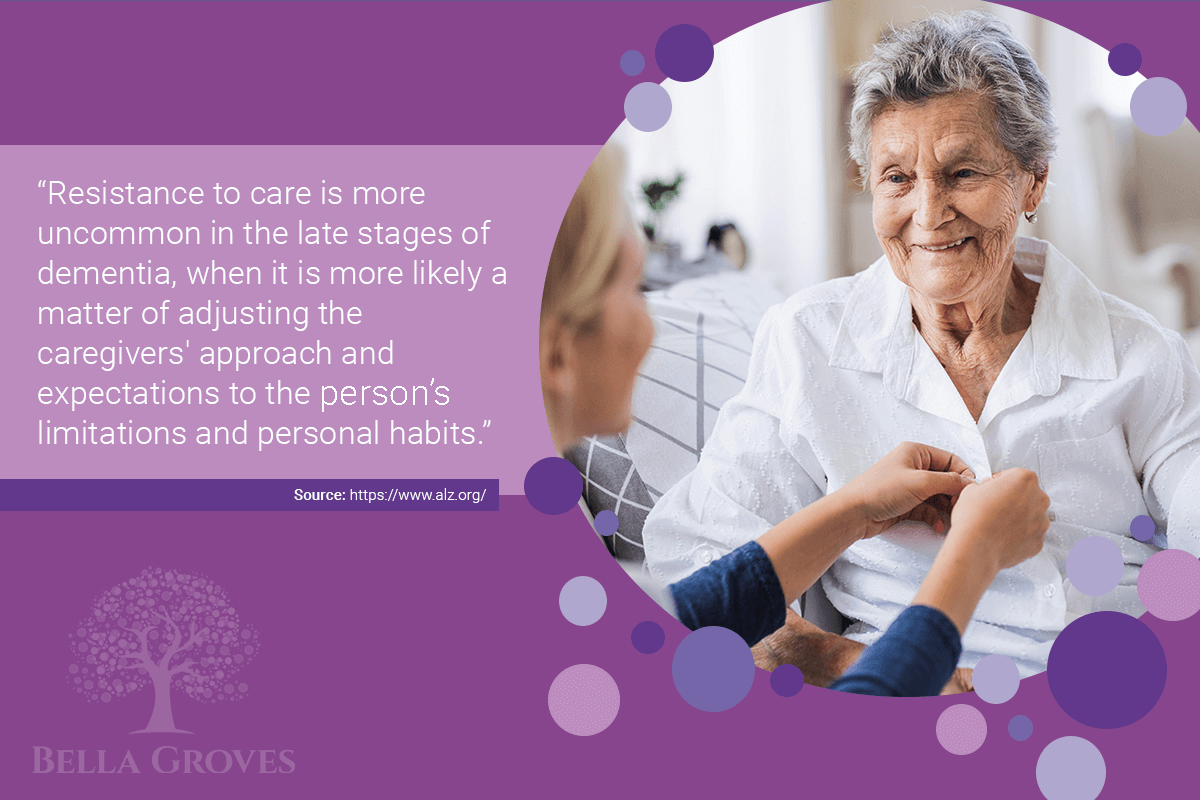
How to Promote Sensory Stimulation for a Person with Dementia
Sensory stimulation is described as the activation of one or more of the five senses – sight, smell, hearing, taste, and touch. This is important for those living with dementia, as the progression of the condition can impact the brain’s ability to process each sense.
Fortunately, practicing sensory stimulation can engage a person living with dementia – connecting them to the moment and their surroundings. “Stimulating the senses of a person with dementia may lead to positive outcomes such as improved mood and increased cognitive function. Even if you don’t notice results right away, incorporating sensory stimulation into the daily routine may help the person relive memories or communicate more effectively (lewybodyresourcecenter.org).”
Our mission at Bella Groves is to create a joyful environment for individuals and families impacted by dementia by providing education, care, and navigation that guides them through their dementia journey.
The importance of sensory stimulation for dementia care is a huge part of our residential care community, which promotes enriching stimulation designed to help individuals grow and experience unconditional joy.
How Does Dementia Affect the Senses?
The human brain is constantly interacting with the world around us, eliciting responses. However, we don’t often think of the bombardment of sensory stimulation that we receive every day.
As dementia progresses, changes to the brain can elicit feelings of confusion, isolation, and even fear. Not only do these changes prevent those living with dementia from effectively communicating or completing tasks, but it changes the way they experience the five senses. For example, a person might be unable to determine temperature, discomfort, or even pain through touch.
Sensory stimulation can provide a person living with dementia with an outlet for expression, communication, and joy. In fact, one study tested the effects of sensory stimulation on residents in long-term care communities and found “improved communication resulted from the enhancement of both verbal and nonverbal communication methods between residents, staff members, and visiting family members.”
How to Use Sensory Cues
Take a moment to reflect on your own sensory cues. For instance, the smell of freshly cut grass might remind you of summers as a kid, running around, carefree. On the other hand, holding your child’s blanket may trigger memories of holding them as a baby.
For all of us, these small reminders of the people we love and past moments bring us comfort and happiness whenever we interact with or notice them. For those living with dementia, similar sensations can occur and provide a safe way to evocate positive emotions and memories.
Sensory stimulation for dementia works best in comfortable environments, utilizing familiar objects, sounds, smells, and even tastes. It can include activities like cooking a favorite meal that evokes familiar flavors and scents, painting a room a calming color, giving a gentle massage, or playing your loved one’s favorite song.
Before you implement sensory stimulation into a dementia care routine, get to know how your loved one is experiencing the things around them.
- Do they have trouble with visual or depth perception?
- Do they experience hearing loss?
These questions can help you determine which method of sensory stimulation is right for your loved one in order to help them feel safe rather than heighten feelings of confusion or anxiety.
Types of Sensory Stimulation
Here are a few ideas to help you to determine which sensory stimulation method would be beneficial for your loved one:
Auditory Stimulation
Listening to music has a powerful effect on those with dementia. Pick music that has ties to special moments in their life, like the first dance at their wedding or a song they sang to their children. Be sure to test out the playlist to gauge how it makes them feel; as music can evoke positivity, it can also create negative emotions in some cases.
Visual Stimulation
Studies have shown that certain colors can positively affect behaviors, feelings, and sensory perceptions of those living with dementia. You can use this idea by painting the walls of your loved one’s bedroom or hanging paintings that utilize specific colors. Colors can also be implemented in objects like dinner plates, clothing, and labels, which can be used as reminders or warnings around the home.
Touch Stimulation
Gentle touch, like a hug, holding your loved one’s hand, or a massage, can benefit a person living with dementia. Soft forms of touch, especially from a loved one, are comforting ways to communicate affection and support. Utilize fuzzy blankets, soft bathrobes, or even plush stuffed animals so they have personal items that evoke comforting sensations.
Taste Stimulation
Tasting a home-cooked meal can bring back memories of the past, whether a person is reminded of the time a relative taught them how to cook the dish or they think of a special dinner spent with loved ones. Cooking a favorite family recipe for your loved one can have this same effect, bringing back positive memories through the sensation of tasting a delicious meal.
Scent Stimulation
A person with dementia might be unable to determine whether an odor or a scent is harmful or simply bad. Try to find some scents that inspire your loved one, like flowers from the garden, the branches from the family Christmas tree, or the perfume or cologne their significant other used to wear. These scents can be comforting and evoke many positive memories and feelings.
As a care partner navigating the challenges of dementia, you need support from those who understand the experience. Our team at Bella Groves is here to help you find resources and education or simply provide a listening ear during those particularly trying days.
Dementia will progress; we’re here to progress with you. Please call us at (830) 323-0440 or email us at hello@bellagroves.com.


